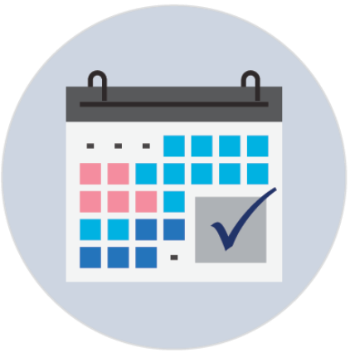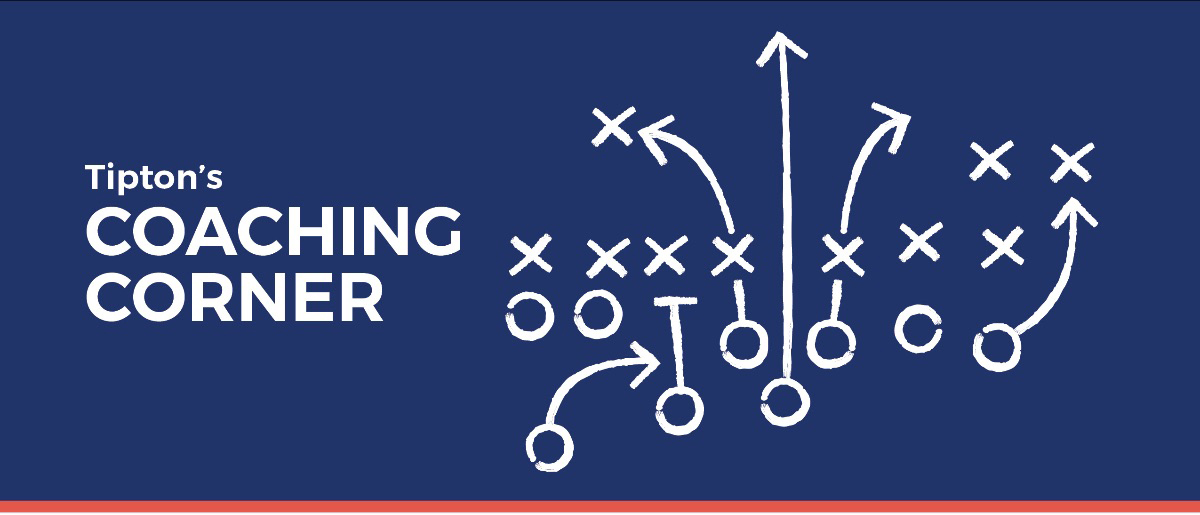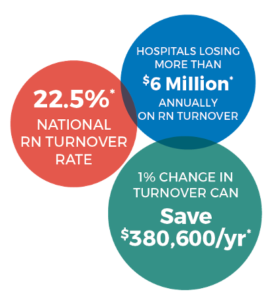
January 2024

Congratulations to Our Clients Who Achieved Magnet® Designation in 2023!
Applause echoes, confetti rains, and heartfelt joy and congratulations are shared to all involved! We are so excited and happy for our clients who achieved their Magnet® designations from the American Nurses Credentialing Center in 2023! Congratulations to you and your dedicated and accomplished nursing teams for meeting the challenges and rigor of the Magnet® program and demonstrating your nursing excellence at all levels! Following is a partial list of clients who achieved designation in 2023.
- Cincinnati Children’s Hospital Medical Center
- Duke Raleigh Hospital
- Duke University Hospital
- Duke Regional Hospital
- Dell Children’s Medical Center at Ascension Seton
- HonorHealth John C. Lincoln Medical Center
- Hunterdon Medical Center
- Inova Fair Oaks Hospital
- Inova Alexandria Hospital
- John Muir Health Walnut Creek Medical Center
- Memorial Hermann Katy Hospital
- Mercy Health St. Mary’s
- Virtua Mount Holly Hospital
Are You Collecting the Right Data for Magnet® Benchmarks
Central to pursuing Magnet® designation is the data that demonstrates your excellence in patient care. This data includes nurse-sensitive indicators and patient satisfaction surveys, along with RN satisfaction. It’s important to collect the right data as early in your Magnet® journey as possible, and here are some of our pointers for collecting the right data and how to present it with your application, particularly when it comes to your Fab 5 documents.
includes nurse-sensitive indicators and patient satisfaction surveys, along with RN satisfaction. It’s important to collect the right data as early in your Magnet® journey as possible, and here are some of our pointers for collecting the right data and how to present it with your application, particularly when it comes to your Fab 5 documents.
Learn More About Data Benchmarks
Magnet® Fab 5 Documents (2023 American Nurses Credential Center Manual)
(For more information about these documents, please consult your ANCC manual.) |
As you gather your data and prepare for the Fab 5, there are several factors you will want to consider when selecting your benchmarks for these critical documents.
How do vendors establish benchmarks? Vendors often use industry benchmarks based on aggregated data from multiple healthcare organizations. This allows you to compare your hospital’s performance against broader industry norms. Some vendors may categorize hospitals into peer groups based on factors such as bed size, location, type (e.g., academic medical center, community hospital), and other relevant characteristics. Benchmarking against similar organizations provides more contextually relevant comparisons.
How do I determine which benchmarks to use in my Magnet® application? First and foremost, making sure that the benchmarks align with Magnet® standards is paramount. Benchmarks should seamlessly integrate with these standards, establishing a direct correlation between performance measures and the certification criteria. Additionally, it’s essential to make sure that the benchmarks are relevant to your specific healthcare setting. Select benchmarks that resonate with your hospital’s specialty and patient demographics, capturing the unique nuances of your healthcare environment. There are a variety of benchmarks for you to choose from based on your organization’s goals. You may choose to compare yourself with other hospitals on a larger scale. This type of benchmark is not as rigorous as others. Comparing your organization to “All Hospitals” is a great place to start. There are also prestigious benchmarks, such as comparing your hospital to all Magnet® facilities, which will have a higher bar. You may also elect to use specialty benchmarks, such as Critical Care or Pediatrics. Validity and reliability of data are key factors in the selection process. Prioritize benchmarks with a proven track record in these aspects to guarantee the accuracy of measurements and facilitate well-informed decision-making.
It’s also a great idea to analyze your organization’s historical trends. This will add depth to the benchmark selection process. By considering past data trends within your hospital, you will be able to establish improvement goals and effectively track progress over time. Here are our suggestions for the best historical trends to analyze.
RN Satisfaction/Engagement Survey
Multiple vendors provide organizational RN Satisfaction Surveys. Some vendors have the ability to pair this survey with the organization’s employee engagement surveys. The various vendors have different populations for benchmarking that are great for EP3EO.
Nurse Sensitive Indicators (NSIs)
We commonly see the National Database of Nursing Quality Indicators (NDNQI). NDNQI is widely recognized for its nursing-sensitive indicators. Leveraging their benchmarks can provide a comprehensive overview of nursing outcomes that align with Magnet standards for your EP19EO and EP20EO documents.
Patient Satisfaction Surveys
We often have clients use Press Ganey patient satisfaction surveys, which are a great place to get data for your EP21EO and EP22EO.
We sometimes see CG-CAHPS (Clinician and Group Consumer Assessment of Healthcare Providers and Systems) as well. Tailored for outpatient settings, CG-CAHPS focuses on patient experiences with healthcare providers. Consider incorporating this survey for a more holistic assessment.
By assessing your hospital’s performance relative to peer institutions, you foster healthy competition and encourage a continuous improvement mindset within the healthcare community. Contact your Magnet® Analyst for a list of Magnet-approved vendors to help you choose a vendor that best fits your needs.
Meet the Team -- Lindsey Owen
Lindsey is a senior manager on the Nursing Excellence Validation Team (NEVT). Her role has rapidly grown on the team thanks to her Magnet® expertise, constant willingness to take on any challenges, excellent editing skills, and ability to find each client’s voice and help tell their stories in the best possible ways to exemplify the accomplishments of each client’s nursing teams—the way they truly deserve.
Validation Team (NEVT). Her role has rapidly grown on the team thanks to her Magnet® expertise, constant willingness to take on any challenges, excellent editing skills, and ability to find each client’s voice and help tell their stories in the best possible ways to exemplify the accomplishments of each client’s nursing teams—the way they truly deserve.
More About Lindsey
Before joining Tipton Health and moving into her current role on the NEVT, Lindsey worked as a grant writer for a medical education company where she developed and submitted formal grant requests and budgets for medical educational programs. She worked closely with the business development department to translate medical needs and goals into learner-focused interventions. Lindsey also spent more than 10 years working in the broadcast journalism field, writing, producing, and executive producing for local television news stations in upstate NY, as well as the Chicago, IL, Harrisburg, PA, and Philadelphia, PA markets. Lindsey holds a bachelor’s degree in English with an emphasis in professional and technical writing from Nazareth College of Rochester in Rochester, NY.
We sat down with Lindsey and talked with her about working on the NEVT and what she had to share with clients.
What would you say is the most rewarding part of your job?
Lindsey: The most rewarding part of my job is being able do something I love (writing and editing – I love a red pen!) to benefit nurses. Each narrative I read consistently leaves me in awe of the work nurses perform each day, and I’m so honored to be able to help them tell their stories and be rewarded with the Magnet® designation they so deserve.
What advice would you give to someone at the beginning of their Magnet® journey?
Lindsey: My advice for a client at the beginning of their Magnet® journey is to avoid getting overwhelmed! We are here to help you every step of the way – we want you to cross that finish line as much as you do. Take one document at a time and follow our coaching to make sure you’re checking off all the boxes for required elements. Also, document, document, document! Keep records of all meetings, discussions, and actions. Behind every good narrative must be the proof that it all happened.
Could you share a writing tip that would be helpful to your clients?
Lindsey: One writing tip I’d like to share with clients is to always return to your criteria. It can be easy to take off with your ideas while writing your narrative, but keep in mind what is required to meet that document’s intent. Main characters, settings, specific actions – you don’t want to leave a requirement out of your narrative.
What is one thing that you wish that clients knew?
Lindsey: I want clients to understand how hard we try to make an example work. We examine it from every perspective, move timelines around, coach for missing details, and find any angle to help it meet intent. We know how hard you’re working to come up with so many different examples, and we don’t take our job lightly. If we DO return an example and recommend a new one, it’s because we truly believe your original is likely to fall short. If you’re questioning whether a potential example may work, please don’t hesitate to reach out to us. We’re happy to weigh in, answer questions, and brainstorm ideas so you feel confident moving forward.

How to Keep Your Busy Writers on Schedule
One of the most important roles of the MPD during the documentation phase is directing all documentation efforts to ensure timely completion. Achieving Magnet® designation is a long and rigorous journey, and one of the best ways to help yourself is to create a detailed writing schedule and ensure that your writers stick to it to get everything reviewed in time for your submission date. Whether this is your first Magnet® designation or you’re going through the process again, here are some of our best tips to keep your writers submitting on schedule.
- Create a writing team agenda: Before you begin writing your Magnet® documents in earnest, it’s important to hold an initial meeting to establish your writing team agenda. We recommend breaking the Magnet® documents into batches with the documents from each batch divided among your writers. Then, schedule a two to three hour meeting with your writers to go over the requirements for the first batch. During the meeting, have your writers discuss the examples they intend to use for their documents to ensure they meet the requirements. We also recommend creating a spreadsheet at this meeting that tracks each writer and the documents assigned to them. Set a due date for the initial batch, and you’re well on your way toward establishing your writing team agenda.
- Schedule regular meetings with your writers: Once you’ve set the requirements and due dates for your initial batch of Magnet® documents, it’s important to keep scheduling regular meetings with your writers. This will help keep the Magnet® journey at the forefront of everyone’s thoughts, and it will give you the opportunity to address any challenges that have come up with document batches. Regular meetings will also help foster collaboration between your writers, strengthening the quality of your documents. These meetings will help encourage your writers to stay on track as well because no writer wants to be the one who fell behind.
- Keep track of document statuses: If you went ahead and created the spreadsheet of your writers and the documents they are assigned while establishing your writing team agenda, you’ll have a much simpler time with this step. Update the spreadsheet during each of your writing team meetings to show your progress thus far, and use this to project dates for your next batch of documents. It can also be helpful to create a second spreadsheet for each batch of scheduled documents to show where they are in the process, such as writing, evidence collection, editing, etc.
- Keep a list of loose ends to tie up: Lastly, there may be situations where you have most of a document complete, but there are some loose ends to take care of. These may arise during the document review process, or you may realize that you are lacking a piece of evidence as you are writing the document. Keep a separate list of these documents and what need to be added, so you’ll have an easy way to find which documents need a little extra attention and take care of it.

Coaching Corner - SE3 & SE4EO; SE5 & SE6EO: SE7 & SE8EO
SE4EO, SE6EO, and SE8EO and their respective sister narratives (SE3, SE5, and SE7, respectively) require your organization to demonstrate a goal and achievement of the goal with graphs representing the most recent three years of data.
SE3 and SE4EO report the organization’s professional nursing certification rates, along with a goal for the rates and action plan to achieve the goal. SE3 is the narrative description of the targeted organizational goal that explains how the target goal was established, as well as the organizational strategies to achieve the goal and the support offered to nurses to achieve or maintain their specialty certifications. Little narrative is required for its sister document, SE4EO, as this will mostly be the annual data the demonstrates that the hospital has met or exceeded the goal. An important tip that we would like to share on these sister documents is to ensure that the goal listed in SE3 is the exact same goal listed in SE4EO. This will both help the documents score well and reduce delays in review time.
SE5 and SE6EO are the next set of sister documents, and these require a narrative description of a unit or division’s action plan for RNs’ progress toward obtaining professional board certification, as well as the data demonstrating it, respectively. Again, it is extremely important that the targeted goals for each example align exactly.
SE7 and SE8EO request your hospital’s action plan for RN progress toward obtaining a BSN or higher degree in nursing, along with the data demonstrating achieving or exceeding the goal. The data for SE8EO should demonstrate progress toward (or obtaining) ≥80% of RNs earning a BSN or higher in nursing. As with all of these sister document pairs, ensure that you are reporting the same goal on each document. We recommend communicating this to all writers involved in creating these documents, so you can keep the goals aligned throughout the entire creation process.
A final tip we would like to share that applies to all of these sister document pairs is that, if there were extenuating circumstances occurring during the final three years prior to your document submission date, and they altered your ability to meet the originally established goal, then you may provide a narrative description of how and why the goal was revised, along with data showing progress toward the revised goal.
RETAIN: Modernize Your Nurse Retention Program
Nursing has changed. Not only has our healthcare environment changed, so have the faces.  Modern nursing teams must strive for inclusion and welcome new ways to support the next generation of passionate nurses.
Modern nursing teams must strive for inclusion and welcome new ways to support the next generation of passionate nurses.
Meet the Needs of New Nurses and Nurse Managers with RETAIN
Do your nurse leaders understand the unique needs of Gen Z? Has your team updated its structures and programs to support nurse retention and professional growth?
Nearly 25% of new nurses leave their positions within the first year of practice, contributing to the high RN turnover rate. Investing in retention programs can reduce your workforce challenges while contributing to improved patient outcomes and nursing satisfaction. The Tipton Health Retention, Excellence, and Transitions Advancement in Nursing (“RETAIN”) Program was created to provide a customized solution to focus on just that: supporting and driving actions that target nurse turnover and retention for nurses in the first two years of practice at your organization.
Program Benefits:
- Targeted to address your greatest workforce challenge
- Customized to align with your organization and vision
- Evidence-based solutions ensure measurable outcomes
- Impactful results will enculturate change and improved satisfaction
Schedule a complimentary conversation with a Tipton expert to learn how the RETAIN Program can help you meet your retention goals, reducing turnover and creating capable, empowered nurses. Contact us through one of the following:
- Call Tipton Health at 302-454-7901
- Email info@tiptonhealth.com
- Complete our online contact form at: https://tiptonhealth.com/contact-us/
CURRENT ISSUE
PAST ISSUES
Let Us Know How We Are Doing and How We Can Better Support You.
We are absolutely dedicated to your success. We form deep partnerships with our clients based on trust. That requires continuous conversation. Tell us how we can better serve you.
